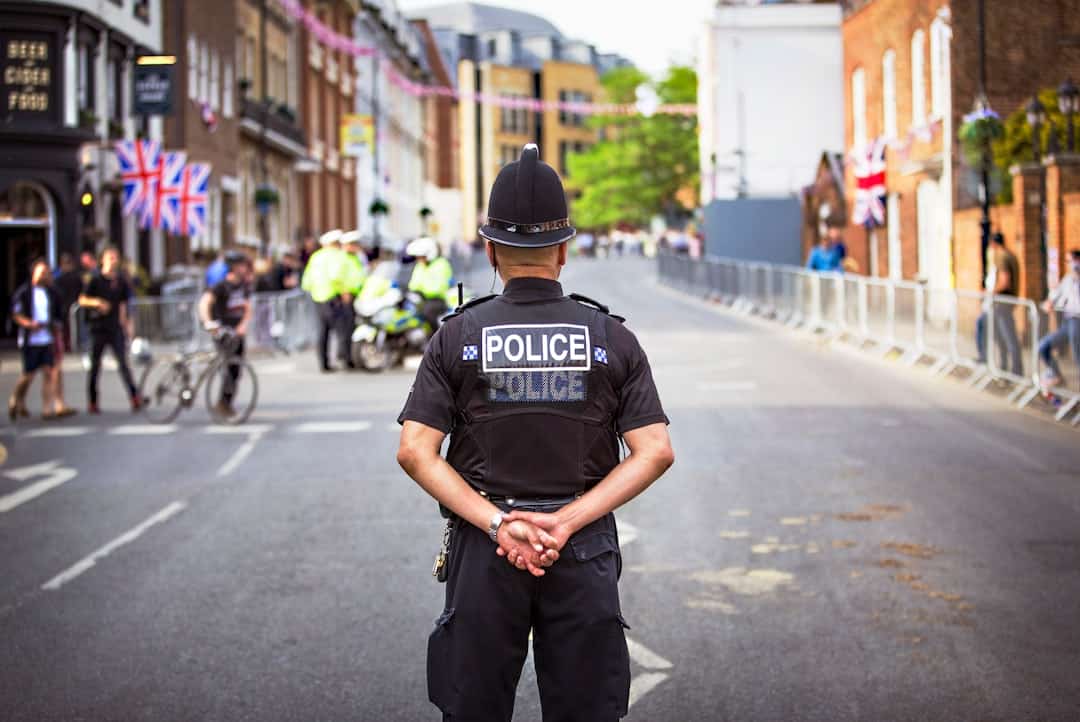In the digital era, passwords are essential for securing access to various online accounts and services. They serve as the primary defense mechanism for protecting sensitive information. However, the increasing sophistication of cyber attacks has raised concerns about password security.
Password cracking is the process of attempting to gain unauthorized access to computer systems or networks by systematically guessing passwords. This can be accomplished through various methods and techniques, making it crucial for individuals and organizations to understand the risks and implement proactive measures to safeguard their passwords. Password cracking can be motivated by various factors, including malicious intent, espionage, or the challenge of breaching a system’s security.
It poses a significant threat to the security of personal and sensitive information. Understanding the methods and tools used in password cracking is essential for individuals and organizations to enhance their protection against such attacks. This article will examine the following aspects of password cracking:
1.
Various methods and techniques employed
2. Commonly used tools and software
3. Common password cracking attacks
4.
Strategies for creating strong passwords
5. The role of encryption in password security
6. Ethical considerations in password cracking
By exploring these topics, readers will gain valuable insights into the nature of password cracking and learn how to better protect their digital assets.
Key Takeaways
- Password cracking is the process of recovering passwords from data that has been stored in or transmitted by a computer system.
- Methods and techniques of password cracking include dictionary attacks, brute force attacks, and rainbow table attacks.
- Common tools and software used in password cracking include John the Ripper, Hashcat, and Cain and Abel.
- Common password cracking attacks include phishing, keylogging, and social engineering.
- Strategies for creating strong passwords include using a combination of uppercase and lowercase letters, numbers, and special characters.
Methods and Techniques of Password Cracking
There are several methods and techniques used in password cracking, each with its own strengths and weaknesses. One common method is brute force attack, which involves systematically trying every possible combination of characters until the correct password is found. This method can be time-consuming and resource-intensive, but it is effective against weak passwords.
Another method is dictionary attack, which involves using a precompiled list of commonly used passwords or words from a dictionary to guess the password. This method is faster than brute force attack and can be effective against users who use easily guessable passwords. Other techniques include rainbow table attack, which involves using precomputed tables of hash values to quickly look up the corresponding plaintext password, and phishing attacks, which involve tricking users into revealing their passwords through fraudulent emails or websites.
Additionally, social engineering techniques can be used to manipulate individuals into revealing their passwords through psychological manipulation or deception. It is important for individuals and organizations to be aware of these methods and techniques in order to better protect themselves against password cracking attempts.
Tools and Software Used in Password Cracking

There are a variety of tools and software programs available for password cracking, each with its own specific features and capabilities. Some of the most commonly used tools include John the Ripper, which is a powerful password cracking tool that can be used for both offline and online password cracking. It supports a variety of hash algorithms and can be used to crack passwords from various sources, including encrypted files and network protocols.
Another popular tool is Hashcat, which is a fast and flexible password cracking tool that supports multiple hash algorithms and can be used for both CPU and GPU cracking. Other tools include Hydra, which is a popular online password cracking tool that supports a variety of protocols, including HTTP, FTP, and SSH, and Cain and Abel, which is a versatile password recovery tool that can be used for various types of password cracking attacks. It is important for individuals and organizations to be aware of these tools and their capabilities in order to better protect themselves against password cracking attempts.
Common Password Cracking Attacks
| Attack Type | Description | Success Rate |
|---|---|---|
| Brute Force Attack | Attempts all possible combinations of characters until the correct password is found | Low to moderate |
| Dictionary Attack | Uses a list of commonly used passwords or words from a dictionary to guess the password | Moderate to high |
| Phishing Attack | Tricks users into revealing their passwords through fake websites or emails | Depends on user awareness |
There are several common password cracking attacks that individuals and organizations should be aware of in order to better protect themselves against unauthorized access. One common attack is the brute force attack, which involves systematically trying every possible combination of characters until the correct password is found. This method can be time-consuming and resource-intensive, but it is effective against weak passwords.
Another common attack is the dictionary attack, which involves using a precompiled list of commonly used passwords or words from a dictionary to guess the password. This method is faster than brute force attack and can be effective against users who use easily guessable passwords. Other common attacks include rainbow table attack, which involves using precomputed tables of hash values to quickly look up the corresponding plaintext password, and phishing attacks, which involve tricking users into revealing their passwords through fraudulent emails or websites.
Additionally, social engineering techniques can be used to manipulate individuals into revealing their passwords through psychological manipulation or deception. It is important for individuals and organizations to be aware of these common password cracking attacks in order to better protect themselves against unauthorized access.
Strategies for Creating Strong Passwords
Given the prevalence of password cracking attacks, it is important for individuals and organizations to use strong passwords in order to better protect themselves against unauthorized access. There are several strategies for creating strong passwords, including using a combination of uppercase and lowercase letters, numbers, and special characters. This can make the password more complex and difficult to guess or crack using automated tools.
Additionally, it is important to use long passwords, as longer passwords are generally more secure than shorter ones. Another strategy is to avoid using easily guessable passwords, such as common words or phrases, birthdays, or names. Instead, it is recommended to use random combinations of characters that are not easily associated with personal information.
It is also important to use unique passwords for each account or system in order to prevent unauthorized access if one password is compromised. Finally, it is important to regularly update passwords and avoid using the same password for an extended period of time. By following these strategies, individuals and organizations can better protect themselves against unauthorized access through strong password security.
The Role of Encryption in Password Security

Encryption plays a crucial role in password security by protecting sensitive information from unauthorized access. When a user creates a password for an account or system, it is often encrypted using a cryptographic hash function before being stored in a database or file. This process converts the plaintext password into a unique string of characters that cannot be easily reversed or decrypted without the proper key or algorithm.
When a user attempts to log in with their password, it is encrypted using the same hash function and compared to the stored hash value. If the two values match, the user is granted access. Encryption helps to protect passwords from being easily compromised in the event of a data breach or unauthorized access.
Even if an attacker gains access to the stored hash values, they cannot easily reverse-engineer the original passwords without significant computational resources. Additionally, encryption helps to ensure that passwords are securely transmitted over networks by converting them into unreadable ciphertext that can only be decrypted by authorized parties. By using encryption as part of their password security measures, individuals and organizations can better protect their sensitive information from unauthorized access.
Ethical Considerations in Password Cracking
Ethical considerations play a crucial role in password cracking, as it involves attempting to gain unauthorized access to sensitive information. While there may be legitimate reasons for individuals or organizations to test their own security measures through ethical hacking or penetration testing, it is important to obtain proper authorization before attempting any form of password cracking. Unauthorized access to computer systems or networks can have serious legal consequences and ethical implications.
It is important for individuals and organizations to respect the privacy and security of others by not engaging in unauthorized password cracking attempts. Instead, they should focus on implementing strong security measures and following best practices for creating and protecting passwords. Additionally, individuals who discover vulnerabilities or weaknesses in security systems should report them to the appropriate authorities or system administrators rather than exploiting them for personal gain.
By considering the ethical implications of password cracking, individuals and organizations can help maintain trust and integrity in the digital world while protecting sensitive information from unauthorized access. In conclusion, password cracking poses a significant threat to the security of personal and sensitive information in today’s digital age. By understanding the methods and techniques used in password cracking, the tools and software commonly employed, common password cracking attacks, strategies for creating strong passwords, the role of encryption in password security, and ethical considerations in password cracking, individuals and organizations can better protect themselves against unauthorized access.
It is important for everyone to take proactive measures to secure their passwords and respect ethical considerations in order to maintain trust and integrity in the digital world.
If you’re interested in learning more about digital security and the potential risks of password cracking, you may want to check out this article on resources and further reading on conferences and events. This article discusses the latest developments in cybersecurity and offers insights into how organizations can protect themselves from cyber threats. It’s a valuable resource for anyone looking to stay informed about the latest trends in digital security.
FAQs
What is password cracking?
Password cracking is the process of attempting to gain unauthorized access to a computer system or online account by systematically guessing the correct password.
How do password crackers work?
Password crackers use various techniques such as brute force attacks, dictionary attacks, and rainbow table attacks to systematically guess or decrypt passwords.
Is password cracking illegal?
In most jurisdictions, unauthorized password cracking is illegal and considered a form of hacking. It is important to only use password cracking techniques on systems and accounts for which you have explicit permission to do so.
How can I protect my passwords from being cracked?
To protect your passwords from being cracked, it is important to use strong, unique passwords for each account, enable two-factor authentication whenever possible, and regularly update your passwords.
Can password cracking be used for legitimate purposes?
Yes, password cracking can be used for legitimate purposes such as testing the strength of a system’s security, recovering lost passwords, or conducting security audits. However, it is important to always obtain proper authorization before attempting to crack passwords.











Leave a Reply